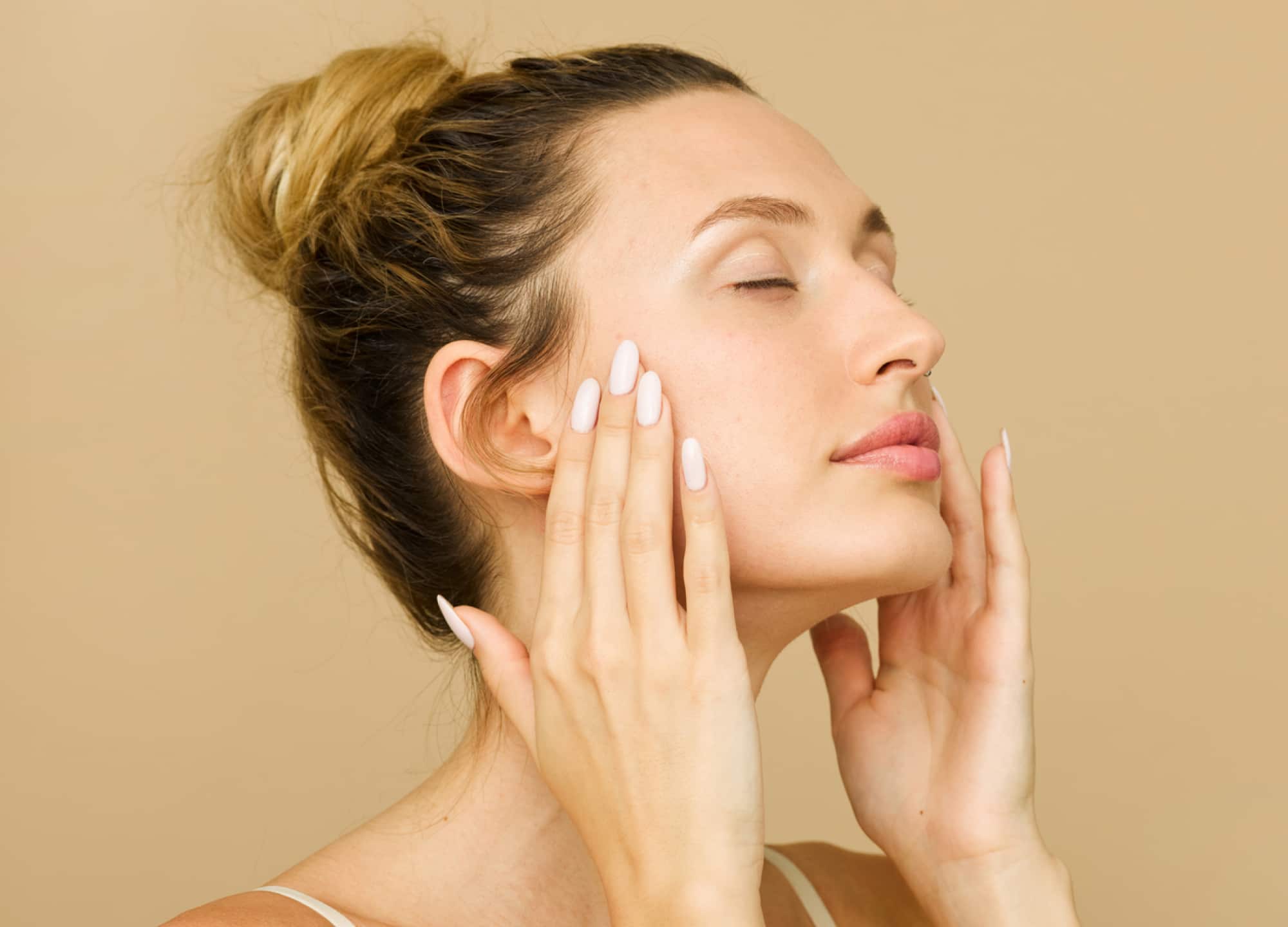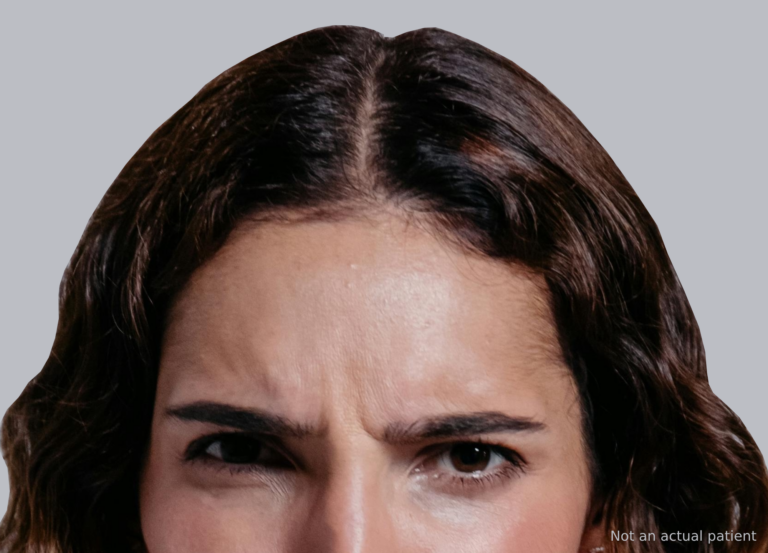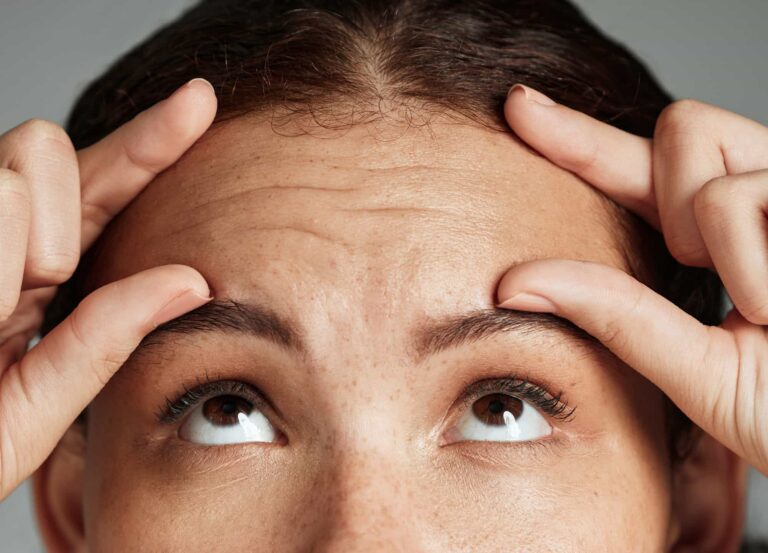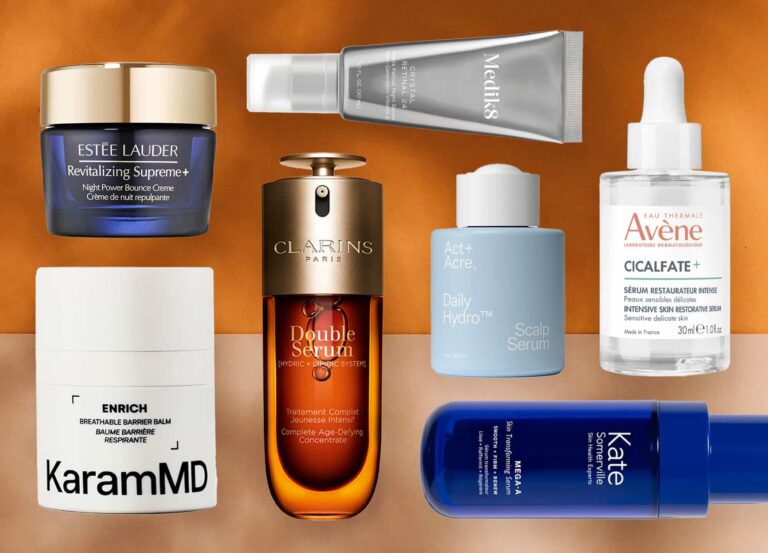More isn’t always better when you’re talking about in-office cosmetic procedures. But that’s not the case with exosomes, a new type of treatment that can be tacked on to other procedures to yield both a faster recovery and better results. If you’ve yet to encounter exosomes, first know that they’re naturally found in the body, where they act as messengers. “Exosomes are responsible for cell-to-cell communication involving fibroblasts, keratinocytes, and immune cells,” says Dr. Jennifer Levine, a board-certified plastic surgeon in New York City. And these days, providers are offering them in a concentrated form that can be absorbed through the skin, topically, after treatment.
That said, not all exosome products are created equal. The first ingredient listed in BENEV’s exosome products is “Human Adipose Stromal Cell Exosomes”; BENEV is, at this time, the only U.S. company that has undergone the necessary process for its exosomes to be given this name and accepted into cosmetic nomenclature by the International Cosmetic Ingredient Nomenclature Committee (INC). The committee designates INCI (international nomenclature cosmetic ingredient) names, which are uniform, systematic names internationally recognized to identify cosmetic ingredients. “When you look at an exosome product, you want to look at the quality of the company and what its standards are for harvesting these exosomes,” says Dr. Gilly Munavalli, a board-certified dermatologic surgeon in Charlotte, North Carolina. On both fronts, few can top BENEV.
And while other exosome companies have emerged, none seems to have the manufacturing power and laboratory standards to match BENEV’s, says Dr. J.D. McCoy, a physician in Gilbert, Arizona. “They’re larger and more expansive than anything else in North America,” he says of its manufacturing facilities. As a result, unlike smaller-scale setups, the sheer breadth of BENEV’s operations allows for a more approachable price point. “That’s important, because I want to be able to offer the products to all of my patients,” says Dr. McCoy.
Exosome topicals can be a powerful addition because while they have solo benefits, they’re even better alongside other treatments. In fact, they’re best paired “with some type of energy-based device or laser treatment or chemical peel,” says Dr. Munavalli. This team-up is strategic: while you can theoretically walk into an office and get exosomes applied to your face, combining them with certain procedures, such as microneedling, laser resurfacing, or a peel, can help with skin penetration, he says.
In other words, when a dermatologist or plastic surgeon first performs a procedure that creates a controlled injury in the skin (which alone can stimulate the body’s wound-healing response), it then creates a pathway for exosomes to sink into skin—where they can then work their magic. On top of that, exosomes can shorten the downtime of more aggressive treatments, making them more desirable to patients. With that, here’s everything you need to know.
What are exosomes?
Derived from stem cells, “exosomes are vesicles that contain cell-signaling proteins, exchanging information between cells using RNA and other important proteins,” says Dr. Levine. In addition to helping cells communicate, they also contain growth factors, cytokines (which help modulate inflammation), and other genetic material. They can come from a variety of sources, such as plant stem cells, but BENEV sources its exosomes from human adipose stem cells—which makes them more effective than the plant-derived competition.
These small messengers are involved with a lot of different processes in the body, especially recovery and regeneration, says Dr. McCoy. “What we have is a tool that can harness the power of that message, to improve outcomes and results in a safe and comfortable way.”
An easy way to think about exosomes is in the context of platelet-rich plasma, or PRP. “[PRP entails] using the growth factor that’s isolated from your body’s own platelets to enhance healing—and exosomes do that at the base level,” says Dr. Munavalli. Not only are they therefore more concentrated than PRP, but exosomes also allow you to get similar benefits (such as rejuvenating skin) without needing a blood draw, he says. Plus they can be applied topically, whereas PRP is usually injected into skin.
How exosomes benefit skin
Exosomes can help amplify the results of a given treatment. “You can use them as a general skin rejuvenation tool, just like PRP. They likely enhance the cellular mechanisms, leading to improvements in skin texture,” says Dr. Munavalli, who compares the effects to those of using a topical retinoid over a long period of time—although they happen much more quickly. For instance, in a 2020 study in Cosmetics, researchers found that exosomes could reduce melanin overproduction in skin, therefore noticeably reducing the appearance of age-related pigmentation and promoting a more radiant, even-toned complexion. That can make them a powerful pairing with, say, lasers or peels that target excess pigmentation.
Exosomes are also able to speed up the skin’s recovery after a procedure. A 2018 study in Stem Cell Research & Therapy found that exosomes may alleviate signs of atopic dermatitis, possibly by reducing inflammation, while another paper in Cells found that they promote skin barrier repair by creating ceramides (lipids that, among others, comprise the skin barrier).
As a result, “most people respond [to exosome therapy] by diminishing their downtime relatively dramatically,” says Dr. Munavalli. “A couple of days of improvement in downtime is significant, depending on how involved or how invasive the treatment is.” If, for instance, you’re doing a fractional nonablative laser like Fraxel, you can knock a day or two off what would otherwise be a week of downtime, he says.
How exosomes can be used in recovery
Exosomes are usually applied to the skin following another procedure—both immediately and in the days afterward. “We’re using them in the office post-procedure, for recovery, and then we’re using them at home, as part of the skin-care routine,” says Dr. Munavalli. His go-to is BENEV Exosome Regenerative Complex, or ERC; available only in medical practices, the exosomes come as a freeze-dried powder that’s simply rehydrated by your provider in a hyaluronic acid–based solution. Then the mixture is smoothed onto skin right after a procedure.
Exosomes’ rejuvenation benefits can also go above and beyond—literally, in the case of the scalp. Applied after microneedling, exosomes can promote a healthy hair-growth cycle and noticeably reduce hair shedding. To pull that off, there’s BENEV ERC+, which is designed to treat both the scalp and the skin. How? “There’s double the [potency] per vial, but there are also minor variations in the peptides that are included with the exosomes that are more focused for scalp and hair,” says Dr. McCoy. In other words, it’s tailored to support scalp health in addition to skin.
Finally, for at-home care following a procedure, Dr. McCoy points to BENEV EXO Balm, which is available for purchase online or from your doctor and can supply a consistent delivery of exosomes. The product pairs a capsule of exosomes (again, as a freeze-dried powder) that can be mixed into the balm and used within the following three weeks. Getting “multiple applications is a good idea because the exosomes are sending a signal,” he says. “So the more frequently you can apply them for that signal, the better.”
The best treatments to pair with exosomes
Really, “any type of skin injury is helped by exosomes,” says Dr. Levine. This includes everything from microdermabrasion-inspired procedures to those that come with downtime. But the following procedures, in particular, can help you make the most of them.
HydraFacial
While the best treatments to use with exosomes tend to involve injuring the skin to some extent, that injury doesn’t have to be extensive. In fact, Dr. McCoy often pairs exosomes with a HydraFacial, which focuses on deeply cleansing and exfoliating the skin. “The beauty of exosomes is they’re very, very tiny, so they penetrate quite easily through the skin when you apply them topically,” he says. So even by simply removing dead skin via exfoliation, you can still reap their benefits—and boost HydraFacial’s skin-rejuvenating results.
Ablative lasers
Laser resurfacing, which triggers the body’s healing response to target discoloration, fine lines and wrinkles, and crepey texture, works especially well alongside exosomes. Dr. McCoy uses exosomes “after any kind of fractionated or fully ablative treatment to improve skin color and texture,” he says. Not only do exosomes improve recovery—which is noteworthy, seeing as some fractional lasers can come with a week or more of downtime—but they can offer more immediate benefits too. “Instantly, the patient feels cooler and more comfortable,” he says. “When the patient comes in for their follow-up, I’ll reapply the Benev ERC.”
Microneedling for scalp health
Just as PRP for hair loss can help stymie shedding, exosomes can be used to address scalp health and eventually benefit hair health. While the cause of hair loss can often dictate the best treatment method, “the number one cause of hair loss, which is in men androgenetic, or male-pattern alopecia, is hormonal sensitivity,” says Dr. Munavalli, who notes that the hormone in question is dihydrotestosterone. This sensitivity can cause hair follicles to miniaturize, or shrink, resulting in hair loss. However, the exosomes can slow that process and, in some cases, reverse the process by aiding in overall scalp health to create a stronger foundation for hair. Because of this, applying exosomes after microneedling on the scalp consistently brings back the healthy scalp cycle—which, in turn, can benefit hair health.
Bottom line
The science so far points to big benefits from exosomes without extra discomfort or downtime. And with FDA clearance, more convenience than with PRP, and the ability to reduce recovery time, it’s a rejuvenation therapy with staying power—and one that might just be worth adding on to future in-office appointments.











